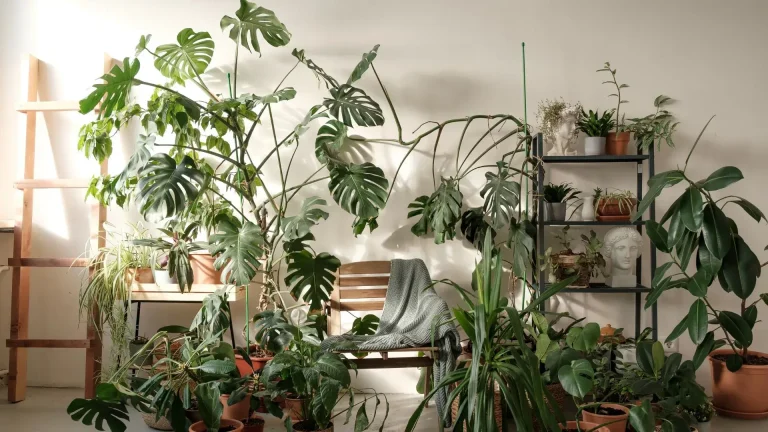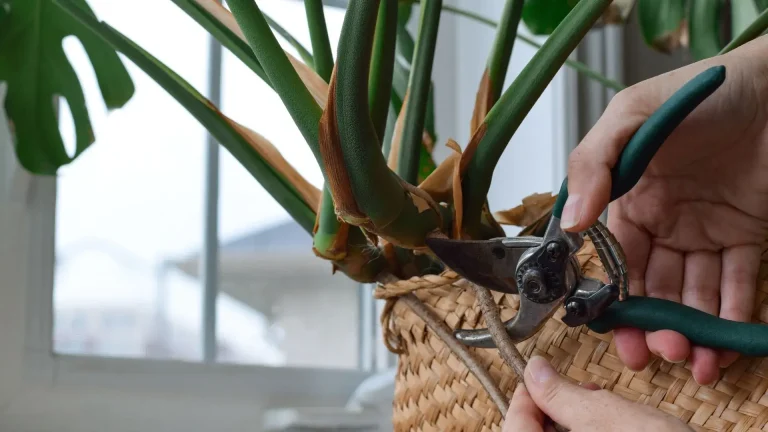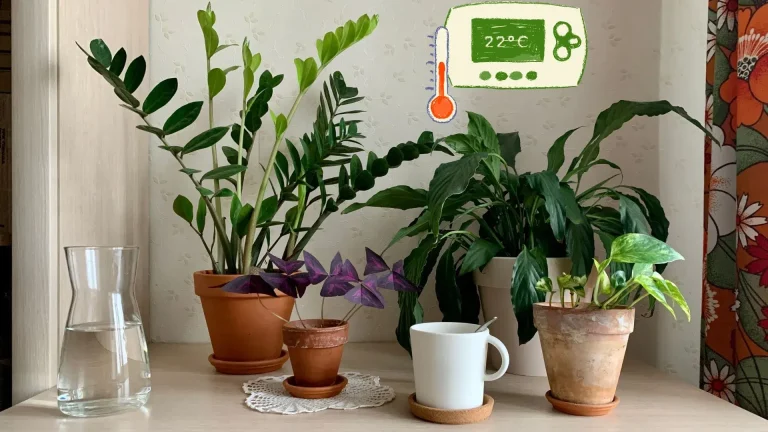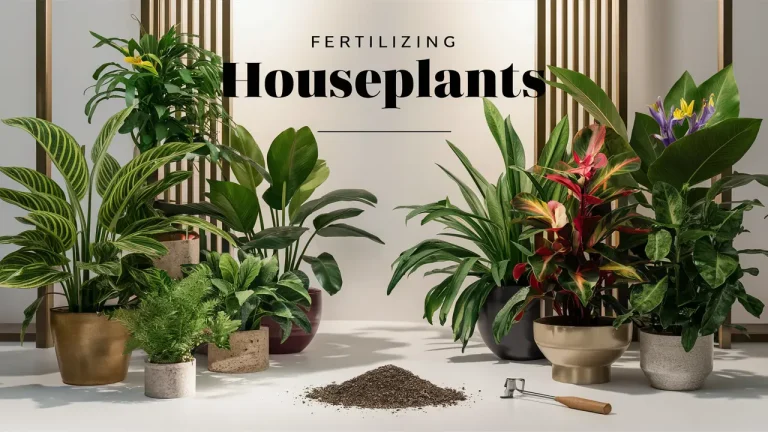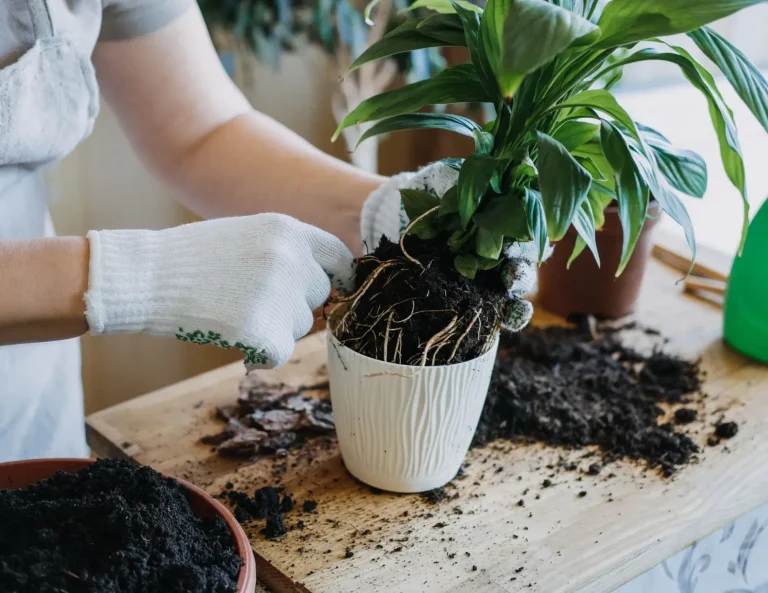Seasonal Houseplant Care Guide: Tips for Every Time of Year
Caring for houseplants isn’t a one-size-fits-all approach—seasonal changes play a significant role in their needs. As the weather shifts, so do the levels of light, temperature, and humidity inside your home.
Each season brings unique challenges and opportunities for your plants. For example, the longer days of spring and summer encourage active growth, while the shorter days of autumn and winter slow down their natural processes. Understanding these changes and adjusting your care routine ensures your plants stay healthy and thrive year-round.
In this guide, you’ll learn how to care for your houseplants through every season with simple, actionable tips. From watering and fertilization to repotting and pest control, we’ll cover everything you need to keep your plants vibrant and flourishing, no matter the time of year.
Table of Contents
Spring: Awakening Growth
Spring marks the beginning of the active growing season for most houseplants. As daylight hours increase and temperatures warm up, your plants will wake up from their winter dormancy. This is the time to refresh your care routine and give them the support they need to thrive.
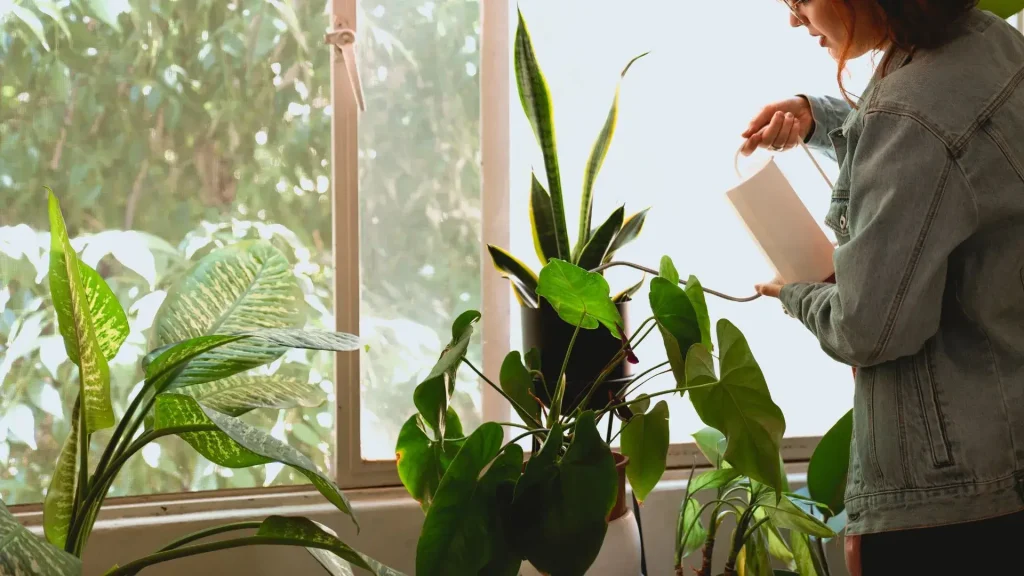
Increase Watering Gradually
With spring’s longer days, houseplants begin growing more actively and will need more water. Adjust your watering routine gradually to match their increased needs. However, it’s still important to avoid overwatering—let the top inch of soil dry out before watering again to keep roots healthy.
Start Fertilization
Spring is also the ideal time to resume fertilizing your houseplants. Use a balanced, water-soluble fertilizer once a month to provide the nutrients they need for new growth. Follow the package instructions carefully to avoid overfeeding, which can harm your plants.
Repot if Needed
As plants grow, their roots can outgrow their pots, leading to a condition called root-bound. Check the bottom of your pots for visible roots or remove the plant gently to inspect its root system. If it’s crowded, repot the plant into a container one size larger with fresh potting soil. Repotting in spring allows the plant to adjust before the peak growing season.
Inspect for Pests
Warmer temperatures and new growth can attract pests like spider mites, aphids, and mealybugs. Take time to inspect leaves, stems, and soil for any signs of infestation. Treat problems promptly with natural remedies like neem oil or insecticidal soap to prevent pests from spreading.
Grab my printable plant care tracker to monitor temperature, humidity, watering, light, and more!
Summer: Peak Growing Season
Summer is the height of the growing season for most houseplants. The abundant light and warmth create ideal conditions for vigorous growth, but they also bring challenges like increased watering needs and potential heat stress.
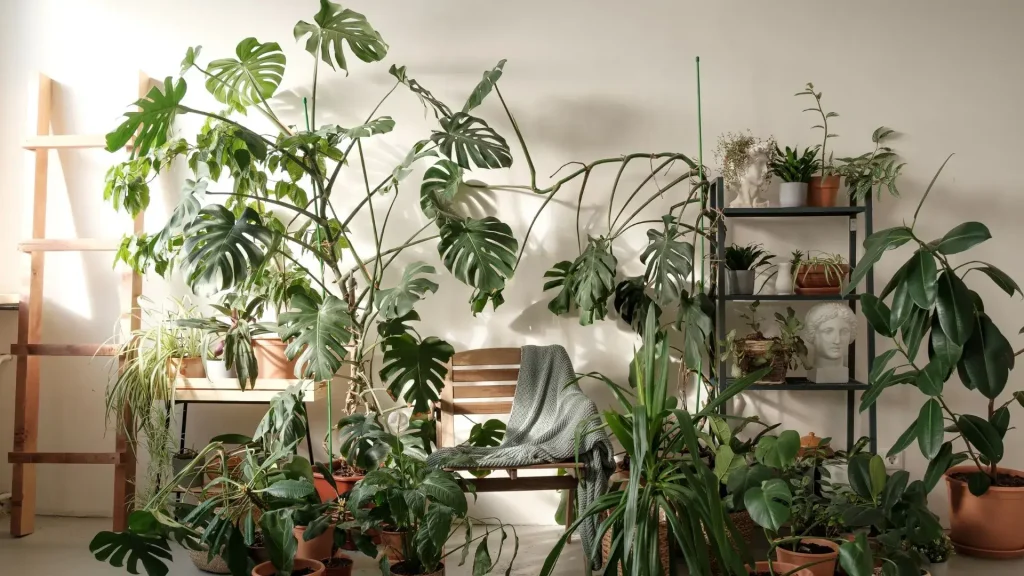
Monitor Watering Needs
As temperatures rise, your plants will require more frequent watering to stay hydrated. Check the soil regularly and water when the top inch feels dry. Be especially mindful of pots placed in sunny spots, as they can dry out faster. For succulents and cacti, stick to their less frequent watering schedule but ensure they get enough to thrive in the heat.
Provide Adequate Light
Many houseplants benefit from the brighter light of summer, but direct sunlight can scorch delicate leaves. If your plants are in a sunny spot, consider using sheer curtains to diffuse the light. Adjust their placement to avoid harsh afternoon rays while ensuring they still receive plenty of indirect sunlight.
Maintain Humidity
Although summer is generally more humid, indoor air can become dry due to air conditioning. To maintain healthy moisture levels:
- Use a humidifier.
- Place a tray of water near your plants.
- Group plants together to create a naturally humid microclimate.
Tropical plants like calatheas and ferns especially benefit from higher humidity during the summer.
Fertilize Regularly
Plants are growing their fastest in summer, so keep up with monthly fertilization. Use a balanced, water-soluble fertilizer to support their growth and health. For flowering plants, consider a fertilizer designed specifically for blooms to encourage vibrant flowers.
Autumn: Preparing for Dormancy
As the days shorten and temperatures cool, your houseplants begin to slow their growth in preparation for dormancy. This transitional season is the time to adjust your care routine to meet their changing needs.
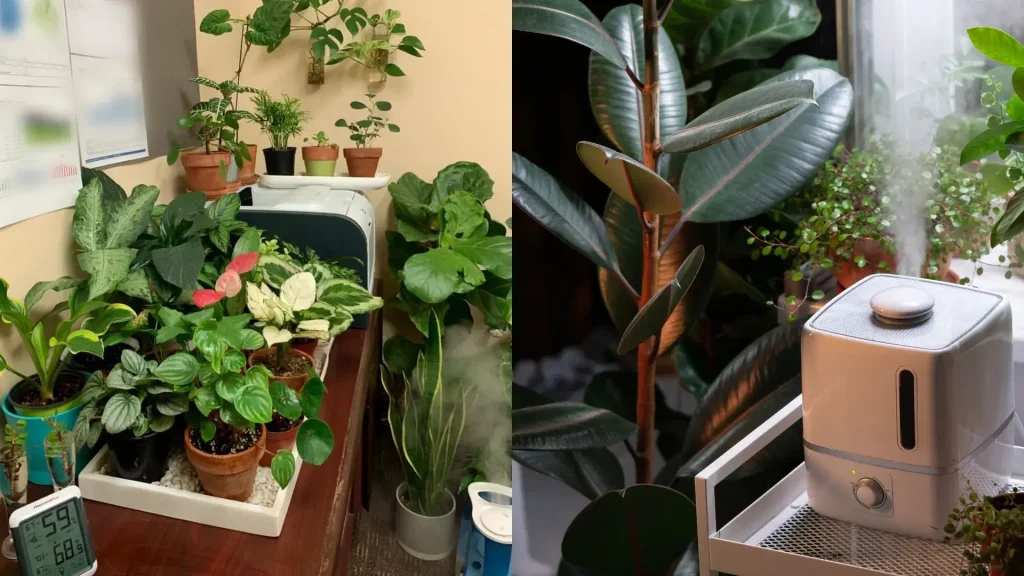
Reduce Watering
With less light and slower growth, plants require less water in autumn. Begin reducing watering frequency, letting the top two inches of soil dry out between waterings. Overwatering during this time can lead to root rot, so err on the side of caution.
Stop Fertilizing
Pause fertilization as your plants prepare for their rest period. Feeding during dormancy can disrupt their natural cycles and lead to nutrient buildup in the soil. Save fertilizing for the spring when growth resumes.
Adjust Lighting
As daylight hours decrease, move your plants closer to windows to maximize the available light. Clean your windows and dust plant leaves to ensure they can absorb as much sunlight as possible. Consider using grow lights if your home becomes too dim for light-loving plants.
Avoid Repotting
Autumn is not the best time for repotting, as plants are entering a resting phase and may not recover well from the stress. Save repotting for spring when active growth resumes.
Winter: Resting Phase
Winter is a time of dormancy for most houseplants. With shorter days, cooler temperatures, and drier indoor air, your plants slow their growth and require a more hands-off care approach.
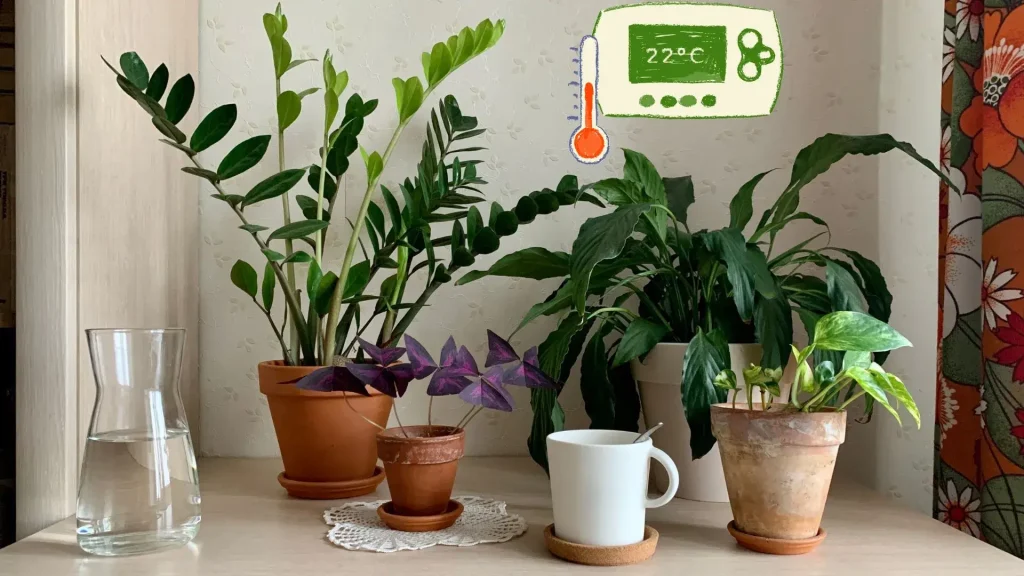
Minimize Watering
Because plants are not actively growing, their water needs decrease significantly in winter. Allow the top inch or two of soil to dry out completely before watering. Overwatering during this time can lead to soggy soil and root rot. Always check the soil moisture manually or use a moisture meter to avoid mistakes.
Maintain Humidity
Indoor heating systems dry out the air, making it harder for plants to retain moisture. Increase humidity levels to prevent issues like browning leaf tips and wilting:
- Place a tray of water and pebbles near plants.
- Use a humidifier to keep humidity between 40-60%.
- Group plants together to create a naturally humid microclimate.
Humidity-loving plants, such as ferns and calatheas, will benefit greatly from these adjustments.
Supplement Light
With shorter daylight hours, plants may struggle to get enough natural light. Move your plants closer to windows to maximize their exposure, but avoid placing them in direct contact with cold drafts. If your home becomes too dim, consider using LED grow lights to supplement light for your plants.
Avoid Temperature Fluctuations
Keep your plants in a stable environment away from cold drafts, heaters, or fireplaces. Temperature fluctuations can stress plants, causing wilting or leaf drop. Maintain indoor temperatures between 65-75°F (18-24°C) for most houseplants and ensure night temperatures don’t drop below 55°F (13°C).
Year-Round Maintenance Tips
Regardless of the season, there are a few key practices that apply year-round to keep your houseplants healthy:
Inspect for Pests
Regularly check your plants for signs of pests like spider mites, aphids, or fungus gnats. Catching infestations early makes treatment easier and prevents pests from spreading to other plants.
Dust and Clean Leaves
Dusty leaves can block light and hinder photosynthesis. Wipe leaves gently with a damp cloth every few weeks to keep them clean. For plants with many small leaves, like ferns, a gentle shower can help remove dust.
Rotate Your Plants
Turn your plants every few weeks to ensure even growth. This prevents them from leaning toward the light and promotes balanced foliage development.
Monitor Soil and Pots
Check for signs of root crowding or compacted soil. While repotting is season-specific, keeping an eye on your plants’ root systems ensures you can plan for repotting when the time is right.
Final Thoughts
By adjusting your care routine to suit the changing seasons, you can keep your houseplants healthy and thriving all year long. From boosting humidity in winter to increasing fertilization in summer, understanding your plants’ seasonal needs ensures they remain vibrant and strong.
Remember, every plant is unique, so observe their behavior closely and adapt as needed. With consistent attention and care, your indoor garden will flourish no matter the time of year.

